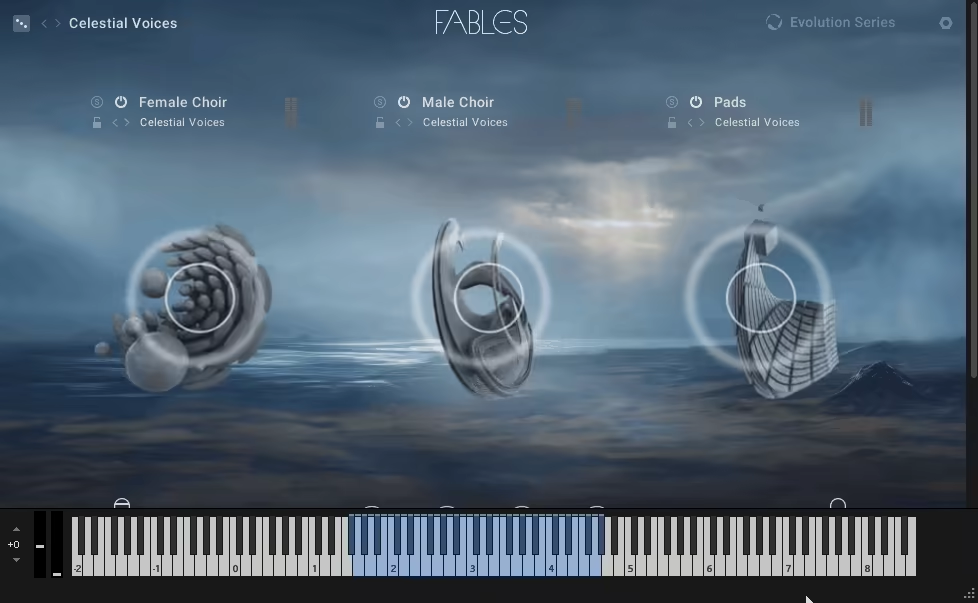Buckle up, film scorers, trailer bangers, and bedroom Hans Zimmers, here are some of the best orchestral & cinematic Kontakt libraries you can find today!
From chasing sweeping orchestral drama or bone-rattling action cues to soft emotional pads that make directors cry on cue, the right Kontakt library can make the moment. Well, you know that stock strings ain’t cutting it anymore.
I’ve dug deep into my own cinematic stash (and borrowed a few from composer friends, shhh), tested these libraries in real-world scoring sessions, and narrowed it all down to absolute bangers.
We’re talking expressive string ensembles, aggressive hybrid FX, lush atmospheres, and loud brasses.
If you’re tired of lifeless MIDI mockups and want that Hollywood polish straight outta Kontakt, you’re in the right place. Let’s dive in and level up your orchestral game!
1. Heavyocity Gravity 2
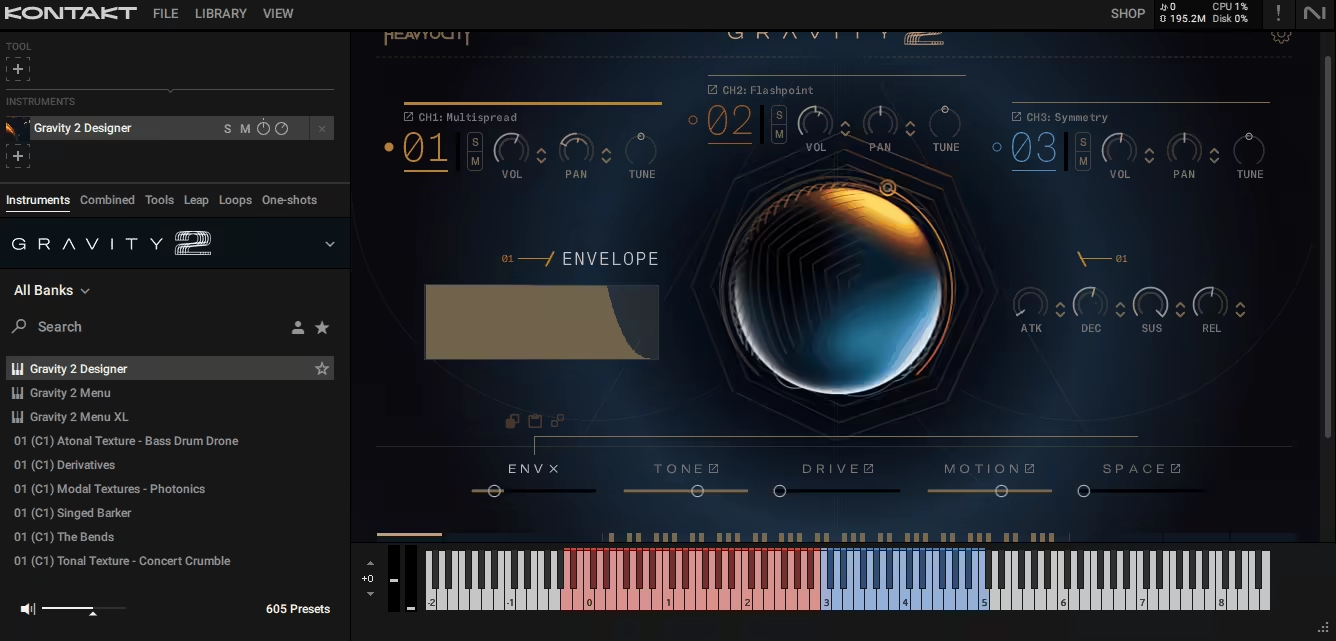
Gravity 2 feels like a full cinematic toolkit disguised as one library.
Gravity 2 is a shapeshifting sound monster that lets me go from delicate textures to apocalyptic impacts without ever leaving the Kontakt interface. The rhythmic pedal loops are a total game-changer, breathing real motion into tracks that otherwise sit a bit flat. This one doesn’t just build on the original Gravity, it launches it into orbit.
The 3-instrument layout is simple but super powerful, as I’ve mostly lived inside the Gravity 2 Designer, where layering three channels of sounds opens up endless combinations.
- 144 Rhythmic Pedal Loops
Think gritty synth pulses, plucked oddities, and even warped guitars. Some are straight and driving, others swing with triplet grooves and they all slam.
I’ve been dropping loops like “Cine Sneak” or “Zero Day” under ambient beds to instantly create momentum. They sync perfectly and feel alive, like a real player is back there twitching on analog gear.
- Expansive Impacts & Stings
Let’s be real, Heavyocity does aggressive better than anyone. The impacts are gut-punches with layered sub/mid/tail control, so I can dial in just the right amount of destruction. Stings like “Bass Bender” or “Filth Factor” are straight-up nightmares (in the best way).
- Beautiful, Eerie, and Dystopian Textures
From shimmering pads to haunted feedback loops, the sustained textures give me tons of options for subtle scoring. “Safe In Your Arms” and “Six String Serenity” are lush and emotional, while “Ghastly Reveal” or “Power Surge” make me feel like I’m scoring a twisted sci-fi dream.
- Transitions & Risers That Actually Work
I’ve collected a million risers that I never use, but these are different. “Cyclone Monster” is a beast, and “Sublimation” doubles as a dreamy pad if you tame it.
Having tempo-synced reverses, swells, and four-bar risers with this much sonic range makes it ridiculously easy to build drama that pays off.
The only real gripe I’ve got is the lack of a proper manual, well, there’s a lot under the hood here, and while it’s fun to experiment, sometimes I wish I had a cheat sheet for the deeper stuff. Besides, that this thing is a great all-in-one library!
Gravity 2 comes in Kontakt Player format for macOS and Windows users.
2. Native Instruments Fables
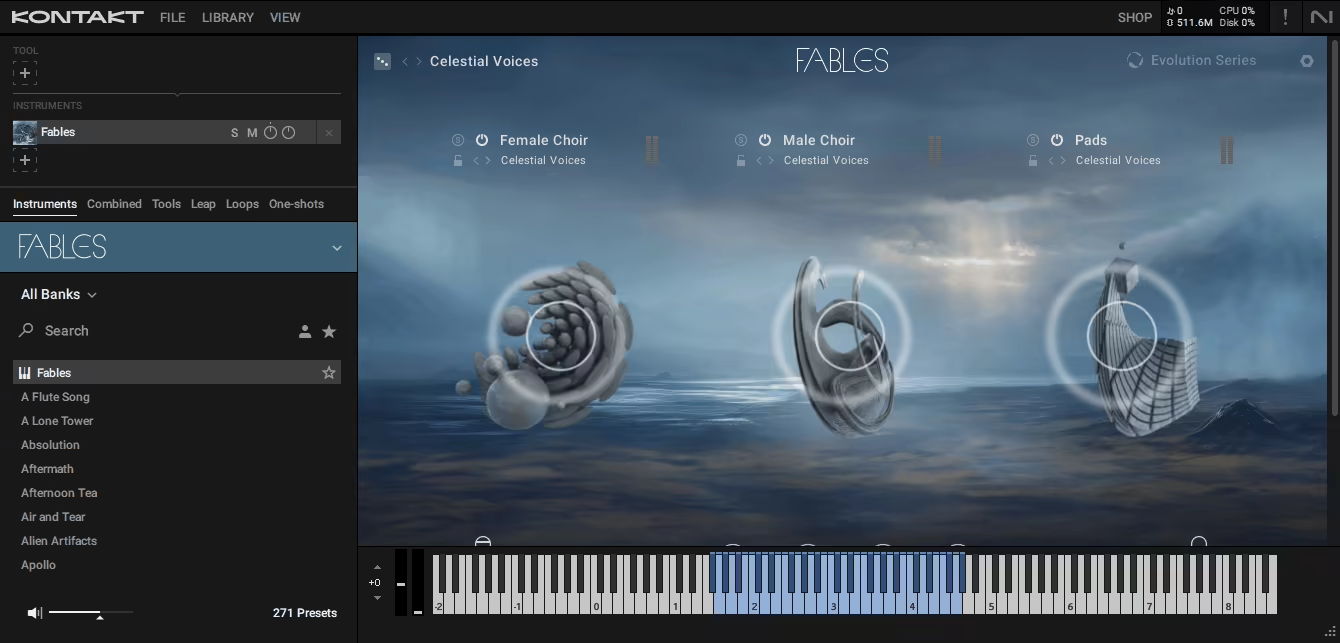
What I enjoy most about Fables is how effortlessly it merges mystical acoustic instruments with ambient synthetic textures.
It feels like someone bottled up a fantasy film score and gave you the keys. Unlike most cinematic libraries that hit you over the head with epicness, Fables leans into subtlety and expression. Here, it’s all about nuance, depth, and movement.
I tried this library to score quiet tension, magical transitions, and even some emotional ambient tracks, and it fits like a glove every time.
The interface is that familiar Native Instruments look with a clean, logical, and surprisingly deep design. The 3-layer engine is the heart of the plugin, letting you stack and morph different instruments to build immersive, evolving textures.
It’s intuitive to use but offers real depth, especially with the dual mic positions and effect controls. Everything’s beautifully laid out, so designing cinematic patches doesn’t feel like brain surgery.
- 3-Layer Hybrid Engine
This is the soul of the VST as it allows you to blend up to 3 instruments at once; anything from choirs to tuned percussion to wild waterphone swells. It’s insanely fun to stack organic and synthetic layers and shape them into something otherworldly.
I love using a soft female choir, glassy pad, and subtle horn to build evolving intros or transitions.
- Polyphonic Aftertouch
For me, this feature is a game changer cause each note can have its own modulation. So you can press harder on just one note in a chord to bring it out, bend it, or filter it.
It feels alive when you’re playing. I’ve used this to add expressive motion to long sustains, and it makes performances feel so much more human and intimate.
- 400+ Articulations & Rare Instruments
You get access to waterphones, choirs, French horns, woodwinds, and more, all deeply sampled with expressive articulations.
Everything’s performed by real musicians, and you feel that in every swell and tremolo. I’ve especially enjoyed the male choir patches and the eerie metallic textures for atmospheric beds.
Downside would be that it’s not built for bombastic, action-heavy cues, this one’s more about mood, mystery, and movement.
I’d use Fables when I want emotion, subtle tension, or otherworldly vibes. It’s ideal for fantasy, indie film scoring, ambient electronica, or anything that needs that touch of storytelling magic.
Fables comes in Kontakt Player format for macOS and Windows users.
3. Heavyocity Symphonic Destruction

Let’s start with the versatile Symphonic Destruction. This library doesn’t just give you an orchestra, it throws that orchestra into a blender with a synth lab, a distortion pedal, and a Hollywood sound designer’s brain.
Symphonic Destruction isn’t your standard strings-and-brass library; it’s a full-blown cinematic monster built for chaos, drama, and pulse-pounding moments. The way it blends traditional orchestration with mangled, hybrid FX is straight-up addictive.
The interface is sleek but packed. At first glance, it feels like you’re staring down a spaceship control panel, but once you poke around a bit, it starts making sense.
The Performer patches make it super easy to build your own playable instrument banks, and I love that you can trigger up to 8 articulations with simple keyswitches.
The Designer pages are where things get really deep, though, tons of layering, modulation, and rhythmic FX that turn basic sounds into total cinematic mayhem. You’ll want to spend time with this one, but it rewards every minute you put in.
- Performer Articulations
This is where I spend the most time. You’ve got everything from classic string sustains and stabs to wild, heavily-processed textures. What makes it stand out is how playable and mix-ready everything feels.
I’ll often start with a preset like “Scorchy Portato” or “Frittharmonika,” then layer in a few others for instant trailer-ready intensity.
- Soundscapes & Pedal Notes
I’m obsessed with the Soundscapes as these patches layer eerie drones, mutated clusters, and evolving textures into single presets.
“Psyborg 2084” is one of my favorites, with 6 pitch zones with completely different vibes that somehow blend like magic. The Pedals are great too, hold one note and you get a whole rhythmic phrase. Great for tension-building with minimal effort.
- Loop & Braam Designers
With the Loop Designer, you can stack three different loops, pitch them, and tweak their playback with full control.
I’ve used it to build entire rhythmic beds that sync perfectly to my DAW. And the Braam Designer is just pure joy for any action cue. Load a few presets, hit a few keys, and it sounds like you’ve scored a full movie trailer in 20 seconds.
What makes Symphonic Destruction a go-to for me is how fast I can go from zero to epic with it. Need a massive hit or a creepy ambience? Easy. Whole tension cue in 5 tracks? Totally doable. I reach for it when I want orchestral power with an unhinged twist.
Symphonic Destruction comes in Kontakt format for macOS and Windows users.
4. Native Instruments Action Woodwinds
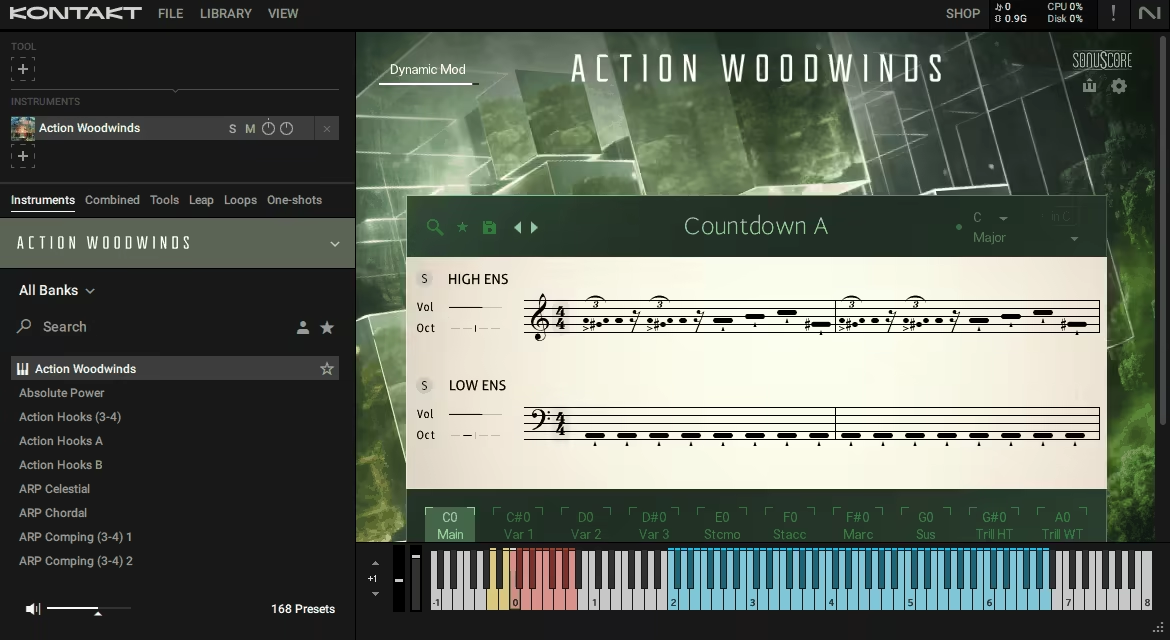
I didn’t think woodwinds would ever get the Action Series spotlight, but here we are and I’m glad they did.
Action Woodwinds brings that same cinematic flair we know from Action Strings and Action Strikes, but this time with fluttery flutes, booming bassoons, and everything in between. I really enjoy how real the performances feel.
The engine feels familiar if you’ve used anything else in the series, but it comes with a serious upgrade. The layout is clean, and while there’s a bit of a learning curve with the phrase editor, once I got past the initial “where’s what,” I started building some wild custom sequences.
You can solo the high and low sections, fine-tune playback, and even export MIDI, which is huge if you want to layer strings or synths over your woodwind lines. I found it especially useful for sketching fast ideas, then swapping in other libraries once the bones were in place.
- 1,000 Real Phrases with Deep Editing
From rapid runs to lyrical arcs, you’ve got over 1,000 building blocks. I love how the Live Modules let me chop and stitch phrases together, it’s way beyond “loop library.”
I’ll often take a falling run and customize the ending to hit the exact note I need. It saves me from having to fake it with legato or MIDI gymnastics.
- Melodic & Arpeggio Modes
If I don’t want to stick with prebuilt material, Melodic Mode lets me perform note sequences in real time. Arpeggio Mode is perfect for turning chords into quick woodwind phrases, and it adapts to key changes like a charm.
These two modes give me the best of both worlds with performative freedom and cinematic consistency.
- Advanced Tools: Scaler, Custom Mode, and 8va
The Scaler is a lifesaver when writing fast, choose a key, and you’re locked into it. Great for staying in line without thinking too much.
The Custom Mode lets me design each step in a sequence, and that 8va button? It’s a cheat code for more drama. I’ve used it to thicken melodic runs and give top lines a sparkling edge that cuts through big mixes.
That said, the editor can be a bit clunky. I’m used to working in my DAW’s piano roll, so poking through menus to create phrases took some getting used to. It’s not as drag-and-drop fast as I’d like, but the trade-off is worth it for the realism.
Whether you’re doing trailer cues, fantasy scores, or just want to give your orchestral textures some real wind-powered motion, Action Woodwinds hits the mark. It’s not just a scoring tool, it’s a storytelling engine packed with real-life flair.
Action Woodwinds comes in Kontakt Player format for macOS and Windows users.
5. Native Instruments Action Strings 2
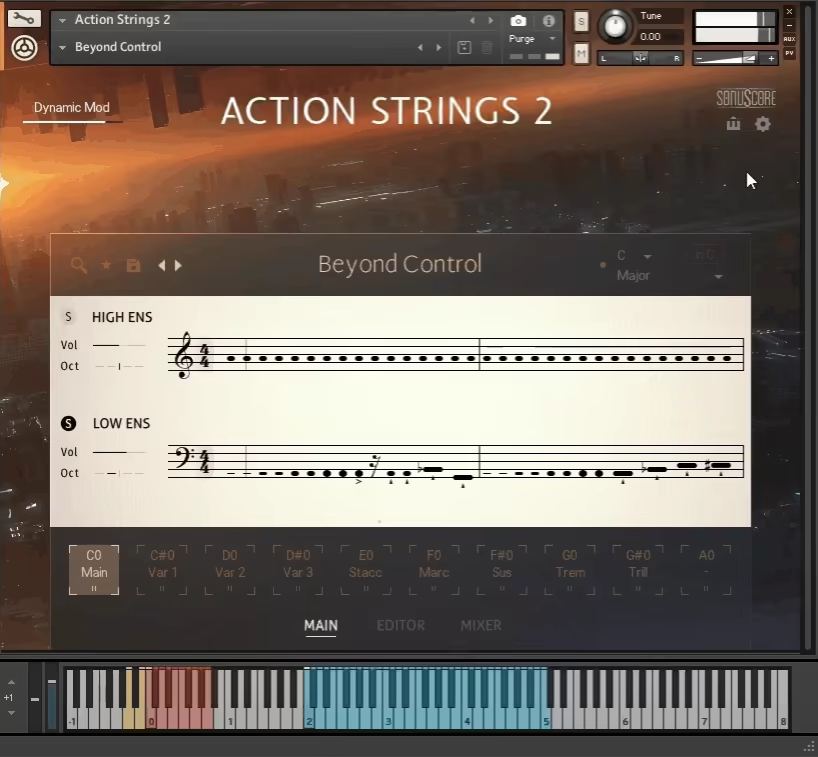
Action Strings 2 makes creating epic string arrangements feel almost effortless, even if you’re not a pro orchestrator.
The standout for me is the phrase-based performance engine that lets you trigger full string phrases with just a single note. It’s like having a mini string orchestra ready to jam whenever you want.
In the Action Strings 2 UI, you’ve got a simple mixer with 4 mic positions, including, Close, Spot, Tree, and Far, that lets you craft anything from intimate to cinematic big-room strings.
The phrase editor is where it gets fun, offering a notation-style layout that’s easy to wrap your head around even if you don’t read music fluently. It’s a solid blend of user-friendly and deep enough to customize when you want to dive in.
- 41-piece String Section
This new sample set brings a lush, dynamic sound that feels alive and expressive. I use the combination of single articulations and “live modules” to build phrases that really breathe, whether it’s fast runs or sustained pads.
- Over 150 Themes and 900+ Modules
The vast library of preset phrases and mini-phrases lets me mix and match to create exactly the vibe I want. The Theme browser’s filtering options are a lifesaver for quickly finding rhythmic or melodic patterns that fit my project.
- MIDI Export
One of my favorite tools is this one, as it lets me capture the performance as editable MIDI clips, which I can then tweak in my DAW or layer with other libraries. This means I’m not locked into the presets and can tailor everything to my heart’s content.
In the end, Action Strings 2 is great for fast-paced action scores but can handle more mellow, emotional scenes too.
Native Instruments Action Strings 2 comes in Kontakt Player format for macOS and Windows users.
6. Native Instruments CHOIR: Omnia

Choir: Omnia Essentials excels at delivering the power of a full 40-piece choir in a simple, streamlined package.
For me the real magic of CHOIR: Omnia is the Syllabuilder engine, which lets you quickly craft rich vocal phrases from individual syllables. It’s perfect for adding authentic choir vibes without fuss.
The interface keeps things clean and focused, giving you solid control over soprano, alto, tenor, and bass sections. I found it easy to navigate, and if you use a Native Instruments Kontrol keyboard, the Light Guide and keyswitches make playing live a breeze.
- Polyphonic True Legato
This feature nails smooth note transitions and natural voice leading every time. It’s super handy for avoiding awkward legato jumps.
- Syllabuilder Engine
With the Syllabuilder you can quickly build expressive, unique choir lines by merging phonemes and randomizing syllable sequences. I often use it to spark fresh ideas fast.
- 4 Independent Choir Sections
Being able to tweak soprano, alto, tenor, and bass separately adds realism and mix flexibility. The single mic position keeps the sound clean and cinematic.
I think it’s not as deep as the full Omnia library, lacking multiple mic setups and extra layering, but that’s the trade-off for its compact size and speed. Just make sure your system’s up to the task for smooth performance.
If you want rich, natural choir sounds that are quick to shape and fun to perform, this is a top pick. Whether for trailers, films, or electronic music, Streamlined Symphonic Choir delivers powerful, expressive vocals with minimal hassle.
Streamlined Symphonic Choir comes in Kontakt Player format for macOS and Windows users.
7. Native Instruments Arkhis
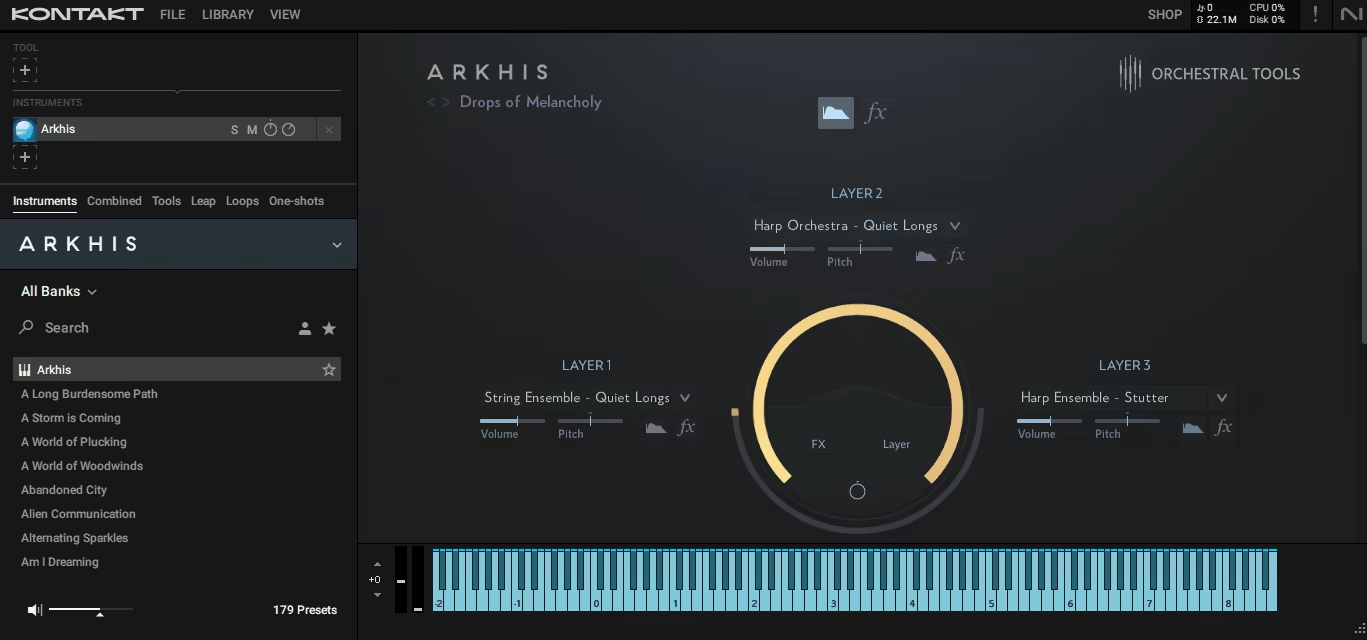
This one’s a dream for fast, cinematic scoring, as with ARKHIS I can quickly dial in rich, evolving textures that feel like they’ve already been mixed for a trailer.
Arkhis got that “press a key, hear a score” vibe, but with way more depth than you’d expect. Built in collaboration with Orchestral Tools, it just oozes modern film score energy.
The interface is buttery smooth. Everything lives inside a smart layering engine with 3 sound slots you can morph between using one big control.
I love how intuitive it is, as you can just assign a patch to each layer, then glide through them with your mod wheel for instant movement and drama. It’s super performance-friendly too, which makes it a joy to play on the fly while watching scenes.
- 90 Sound Sources
From lush orchestral swells to eerie waterphones, everything was tracked at the Teldex Scoring Stage. The depth and realism are unreal.
- 3-layer Morphing Engine
You can blend sounds seamlessly using a single macro control. It’s the easiest way I’ve found to create builds, swells, or shifting pads that evolve in real time.
- Built-in LFO and FX Control
When I want subtle motion or dramatic swells, I just twist these knobs, and voila. I often use this to accent changes in scenes or re-introduce a theme with new energy.
Well, I gotta admit if you’re looking for raw customization or deep synthesis, this isn’t the place. Also, it doesn’t do traditional orchestration, it’s more about cinematic textures and moody layering.
But honestly, that’s the point. ARKHIS is all about speed and vibe. It excels at giving you quick results that sound like they took hours!
ARKHIS comes in Kontakt Player format for macOS and Windows users.
8. Native Instruments Mysteria
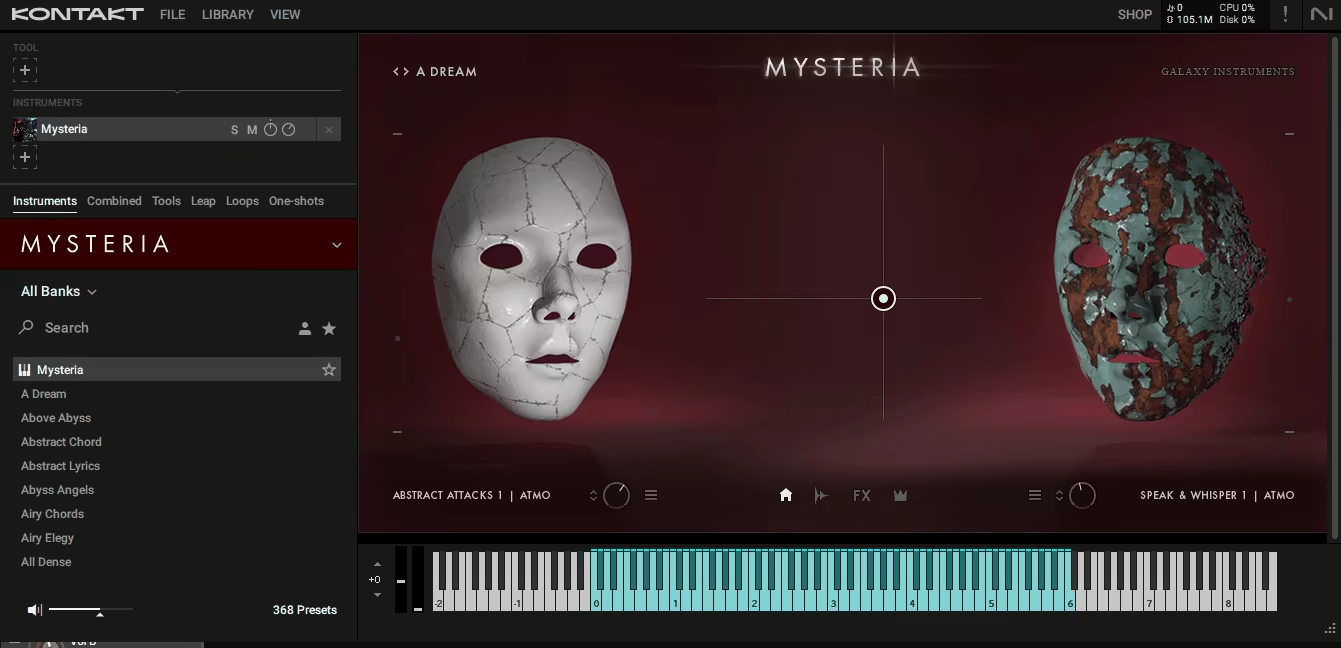
If you want to turn the human voice into a haunting, cinematic powerhouse, here comes the Mysteria.
Unlike typical choir libraries, Mysteria is designed for dark atmospheres and suspenseful scoring; think intense tension and eerie vocal textures that you can shape in real time.
The interface is sleek and performance-focused, centering around the X-Y pad that blends two layers and adjusts their intensity. It’s easy to tweak on the fly, with a ton of presets that span everything from thick clusters to delicate atmospheres.
While it’s not about traditional melodies (pitch is fixed per sample), the sound design options here are amazing for creating evolving, textured soundscapes.
- Extensive Vocal Sample Library
Over 30GB of recorded male and female choirs, chamber groups, and vocal quartets give you a huge sonic palette from intimate whispers to massive epic clusters.
- X-Y Pad Performance Control
Here you can blend two sound layers and adjust emotional intensity with a single, expressive controller. This makes it really fun to perform evolving vocal textures live or in your DAW.
- Cluster Designer Tool
I liked that this tool allows me to build and customize tonally-playable clusters with up to 8 voices, adjusting tuning, panning, and playing modes for unique sonic effects.
Coming to the downsides, well, this thing is not meant for conventional singing or clear vocal lines, pitch isn’t controlled by MIDI notes, so if you want classic melodies, this isn’t your go-to.
Also, the price reflects its specialist nature, so it’s really aimed at serious media composers or sound designers.
I keep Mysteria handy whenever I need chilling atmospheres or tense vocal moods that push beyond the usual choir libraries.
Native Instruments Mysteria comes in Kontakt Player format for macOS and Windows users.
9. Native Instruments Lores
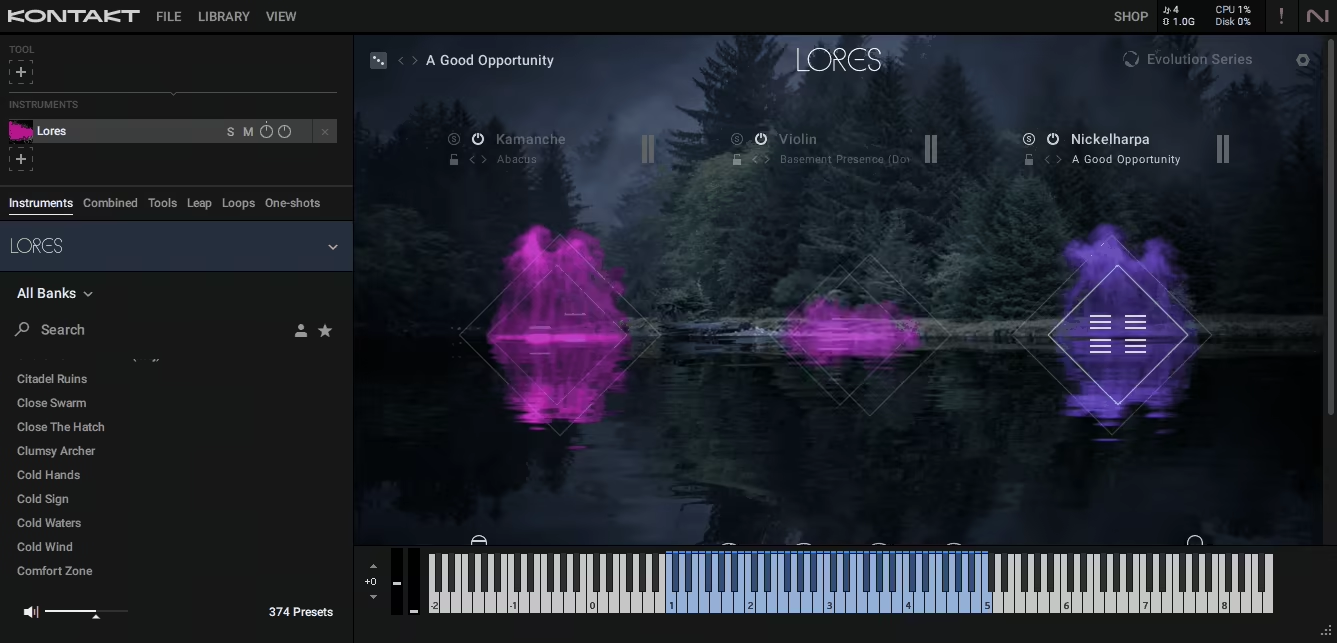
The LORES library is famous for transforming rare, organic instruments into a deeply emotional storytelling tool.
If you want breathing soundscape where a shakuhachi whispers over a hurdy-gurdy drone and a Mongolian fiddle weaves through woodwind phrases, Lores is the right choice.
I’ve used a lot of world instrument libraries, but nothing else offers this kind of fantasy-meets-folk fusion with such personality.
The interface is classic NI polish with an inviting, intuitive, and playable layout. You can blend up to 3 layered instruments, each sculpted with nuanced parameters like Noise, Power, and Boost, which is great for me as it brings unique sounds to the table.
- Eclectic Instrument Collection
You get 16 rare and traditional instruments, from medieval pipes to vocals and exotic chordophones, each sampled with over 300 articulations. I think it’s a dream for building colorful, narrative-rich cues.
- Expressive Human Sampling
Performers were captured with real-life quirks like tremolos, swells, and harmonic imperfections that make everything feel alive. That subtle randomness gives your phrases an uncanny realism.
- Creative Blending and Spatial Staging
You can layer instruments within evolving “smoke plumes,” adjusting mic depth and stereo placement to create immersive atmospheres. I used this to stage sounds like a character in a scene.
If I had one wish, I’d love even more mic positions or a bit more control over soloing layers individually. But honestly, LORES isn’t about surgical detail, it’s about flow, color, and vibe.
Native Instruments LORES comes in Kontakt Player format for macOS and Windows users.
10. Native Instruments Straylight
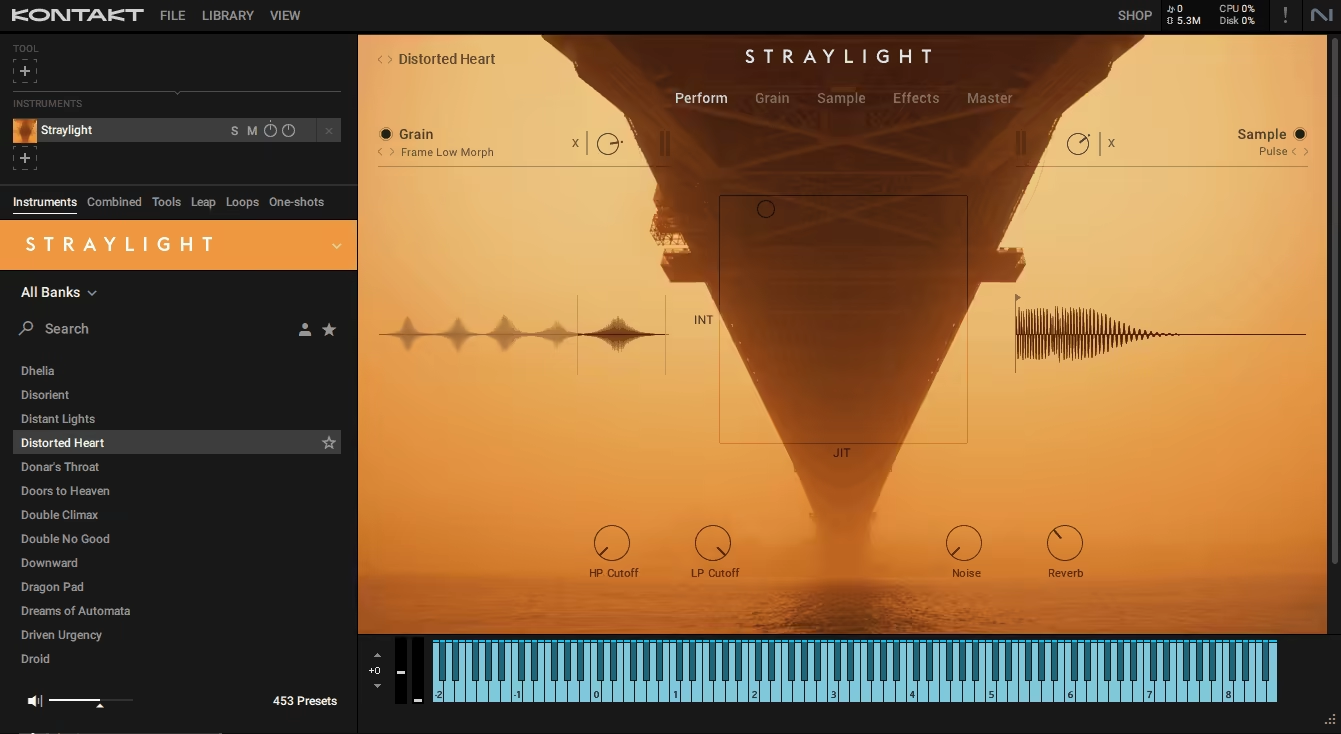
Straylight stands out for how effortlessly it conjures up cinematic tension.
Whether it’s slow-burning suspense or sci-fi-style soundscapes, Straylight is practically built for drama. The granular engine is the secret sauce behind its evolving, otherworldly textures.
You get both grit and elegance in the same breath, which is rare in sound design tools this focused.
The interface strikes a nice balance between deep and immediate. On the surface, you’ve got the Perform screen with everything laid out for fast modulation and balance control between the granular and sample layers.
Dig a little deeper into the other tabs and you’ll find detailed sculpting options, FX chains, and even sample editing if you’re up for customizing your own sounds. It’s a clean, modern layout, minimal but packed.
- Granular Engine with Cinematic Depth
This is where Straylight really flexes. Its grain module handles organic material in a way that’s smooth yet unpredictable. Tones stretch and morph without falling apart, making it perfect for risers, drones, and weird harmonic textures.
- Built-in Sample Layering and Drag-and-Drop
Both layers play off each other beautifully, and you can toss in your own recordings to take it even further.
I tried it with field recordings and ended up with tones that sounded like broken machinery singing in slow motion.
- X-Y Modulation for Live Control
Instead of endless tweaking, you just move one dot and the sound evolves in real time. It’s a clever setup that’s ideal for scoring to picture, especially if you want dynamic changes without automation headaches.
The presets offer a massive head start, over 450 of them, ranging from ambient pulses to atonal FX. Many of them lean toward dark or experimental moods, but there’s flexibility if you want to tone things down or build your own patches from scratch.
If I had to nitpick, the GUI could be more generous with control sizes, and it’s definitely more at home on a powerful system. It’s also more specialized than general-purpose instruments, but that’s part of its appeal.
Straylight is one of those rare tools that makes sound design feel like storytelling. It’s bold, a little twisted, and totally immersive, especially when you want your score to sound like it’s bleeding out of the screen.
Native Instruments Straylight comes in Kontakt Player format for macOS and Windows users.
11. Native Instruments Valves Pro

Soft brass with soul, that’s the vibe Valves Pro locks into from the very first note.
This isn’t a bombastic horns-on-steroids kind of library as this is more about subtlety, flow, and depth.
Expanding on the original Valves, Valves Pro lets you sculpt mellow brass sections that feel expressive and alive, great for moody scores, jazzier arrangements, or anything needing a cinematic shimmer without the edge.
Everything happens across 3 distinct modes: Solo, Ensemble, and Player. The layout stays consistent, and the interface is clean and musical.
Whether I’m working one instrument at a time or triggering full chords, the experience feels natural, no technical gymnastics needed to get something expressive out of it.
- Solo Mode with Virtuoso Articulation Switching
Each instrument can be played solo, but here’s the kicker: you don’t need to fuss with keyswitches.
The engine reads your dynamics and pitch bend data, switching articulations automatically for a performance that breathes. Great for getting nuanced takes with just a mod wheel and some velocity curves.
- Ensemble Mode with Auto Divisi
Write full chords, and Valves Pro intelligently splits the notes across 5 brass voices. It feels like conducting a real section, you focus on harmony and emotion while the library handles voice leading.
Every instrument gets its own articulation slots too, so it’s still deep if you want that level of control.
- Phrase Player with Customizable Sequencing
Over 200 pre-made phrases are ready to drop in, but the real fun starts when you build your own.
Layer articulations on a tempo-synced grid, tweak loop points, and use the Moments slider to keep it feeling fresh and human. Ideal for sketching, or for turning simple ideas into dynamic passages.
The Mixer page lets you blend mic types (ribbon for warmth, condenser for detail), control levels per instrument, and add effects like EQ, saturation, reverb, and delay, all within the plugin.
It’s a fully self-contained brass suite, and that’s rare. The added LFO modulation in the FX section even lets me inject some subtle motion, especially when working with drones or pads.
If you’ve already got the original Valves, you’ll find double the content here, more articulations, more phrases, more flexibility. I wouldn’t use it for aggressive trailer work, but when I need brass that whispers instead of shouts, this is my go-to.
Valves Pro runs in Kontakt 7 or the free Kontakt 7 Player on both macOS and Windows in VST3, AU, AAX, and standalone formats.
12. Symphony Series Brass Ensemble
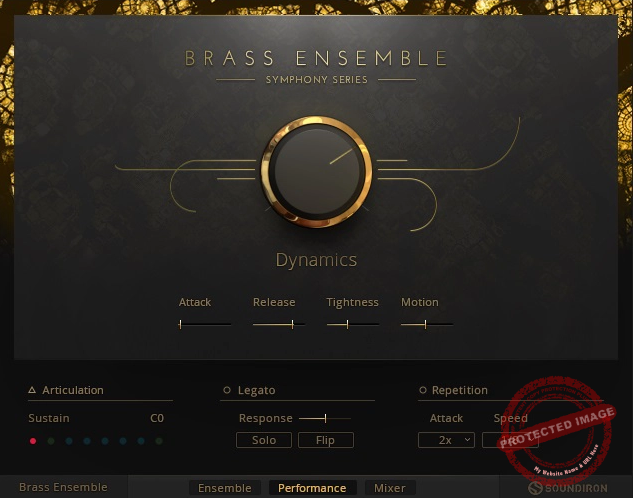
I’ve spent quite some time with brass libraries, but what really sets Symphony Series Brass apart for me is how it captures that huge, cinematic brass sound while still feeling playable and expressive.
I really liked the balance between lush ensemble swells and detailed solo performances, cause it’s like having a whole brass section at my fingertips, ready for anything from blockbuster scores to intimate cinematic moments.
I have to admit that the natural ambience of the St Paul’s Church recording space adds this organic vibe that really brings the brass to life in a way many libraries miss.
The Symphony Series Brass Ensemble interface keeps things simple but powerful, with a consistent layout for both the Ensemble and Solo libraries. I find the big Dynamics knob really intuitive and it’s my go-to for shaping the brass expression fast.
Controls like Attack, Release, and Tightness are easy to tweak on the fly, and I appreciate the sketchpad presets for quickly laying down ideas before diving deeper.
- Extensive Articulation Selection
The range of articulations are really breath taking as there’s everything from true legato, swells, crescendos, to staccatos and multiple mute types.
I often use the Virtuoso articulation system that intelligently switches articulations based on velocity or expression, which feels natural and keeps my workflow flowing without having to jump around keyswitches.
- Smart Auto Divisi and Instrument Control
When working with the ensemble patches, the Auto Divisi feature is a lifesaver. It automatically assigns notes to the best instruments within the section, so my chords sound authentic without me having to micromanage every note.
Plus, you can customize the instrument ranges and volumes, which helps sculpt the section sound perfectly for my mix.
- Mixer and Effects Flexibility
The library’s Mixer tab is surprisingly detailed, with control over close, mid, far mics, and a stereo pre-mix option.
I love dialing in the perfect ambience with the built-in convolution reverb, EQ, and compressor. The Transfer Settings feature is great for copying mixer setups between presets, speeding up my workflow during big sessions.
One downside is the lack of smooth dynamic crossfading in the Solo library, which can make solo parts sound a bit static at times.
Overall, Symphony Series Brass feels like a premium tool that’s surprisingly easy to get musical results with.
Native Instruments Symphony Series Brass Collection comes in Kontakt Player 6.2+ format for macOS and Windows users.
13. Native Instruments Noire
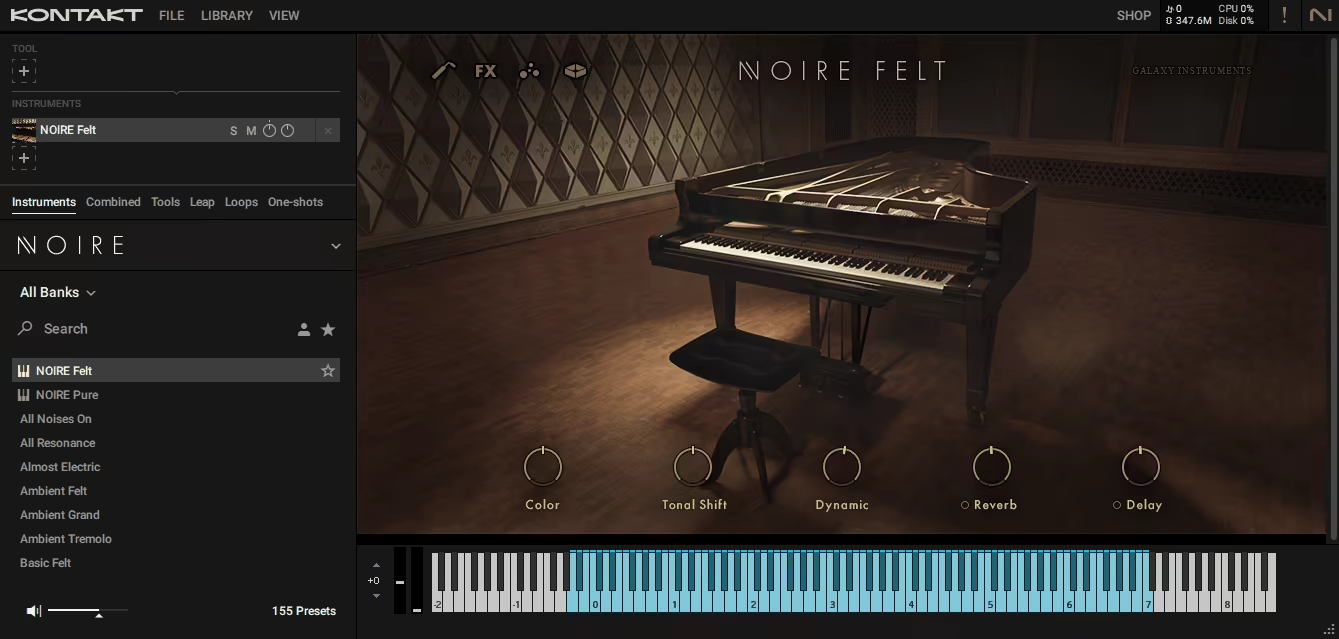
What really grabbed me about Noire is how it’s more than just a sampled piano, cause it’s a whole sonic experience shaped by Nils Frahm’s vision and his custom Yamaha CFX.
I really like how Noire gives you both the pure concert grand sound and a soft, intimate felted version, letting me switch vibes depending on the mood. But what makes it truly stand out for me is the Particles Engine, cause it’s this mind-bending feature that generates swirling, harmonic clouds that add life and unexpected textures to my playing.
Honestly, it kept me hooked for hours, inspiring me to explore new creative paths I hadn’t thought of before.
The interface is clean and thoughtfully laid out, with intuitive controls that invite exploration rather than overwhelm. I really appreciate how the Dynamics, Color, and Tonal Shift knobs let me twist the piano’s character in wild directions or subtle nuances.
The Piano Edit page is a playground of detailed tweaks, from adjusting sympathetic resonance to fine-tuning pedal noises, which adds so much realism without becoming a hassle. Plus, the built-in effects like EQ, compressor, convolution reverb, and delay help me sculpt the piano perfectly within my mixes.
- Particles Engine
This is the heart of Noire’s creative magic. It automatically generates MIDI notes that create pulsating, swirling harmonic layers based on what you play.
You can control the density and variation, and sync it to tempo for rhythmic effects or let it run free for dreamy, aleatoric textures. It’s not a typical effect or arpeggiator, it’s something way more inspiring that pushed me to write fresh ideas and textures effortlessly.
- Pure and Felt Versions
Having both the clear, articulate Pure piano and the mellow, muted Felt option is a game changer. I often switch between them depending on whether I want bright clarity or that cozy, intimate vibe.
Plus, the Color and Tonal Shift controls mean you can morph sounds dramatically and I found the Pure’s Color set around -60 almost indistinguishable from the Felt version, which was great to work with.
- Detailed Sound Sculpting
The Piano Edit page offers control over release samples, body resonance, sympathetic overtones, and various noises like pedal and mechanical sounds.
The Tonal Depth slider adds richness and sustain that makes the piano bloom beautifully. I loved tweaking these parameters and it made the piano feel alive and organic rather than just sampled notes.
There’s a lot packed into Noire, and the only tricky bit might be wrapping your head around the Particles Engine at first, but it’s absolutely worth the learning curve.
I found the FX section really helpful for polishing my sound without having to leave the plugin, especially with presets like Shimmer, Bite, and Punch on the EQ.
If you’re after a piano with tons of character, nuance, and a creative spark that goes beyond standard sampled instruments, Noire will be your new obsession.
Native Instruments Noire comes in Kontakt Player format for macOS and Windows users.
14. Native Instruments Rise & Hit

My last library pick, Rise & Hit shines with its way of nailing that epic cinematic tension-building vibe without feeling like a generic sample pack.
I’ve used loads of risers and impacts before, but Rise & Hit stands out because every sound is crafted for real drama and scale, for anything from scoring a blockbuster trailer to adding suspense to a game soundtrack.
The orchestral and hybrid layers give me a ton of options to sculpt just the right amount of anticipation or explosive release, which keeps me hooked every time I load it up.
The GUI splits the keyboard cleverly so you can trigger rises and hits separately or combined, and the layering system lets you stack up to four samples per patch with individual controls for timing, pitch, and effects.
What I really appreciate is the modulation editor, as it’s straightforward but powerful, letting me automate fades, filter sweeps, and volume changes easily to create smooth or sharp transitions. Honestly, this workflow makes building cinematic builds almost fun instead of a chore.
- Multi-layered Sample Patches
Each patch has up to 4 layers that you can tweak independently, which means you can build complex, evolving sounds.
I love how I can pan, transpose, and add effects like filters, distortion, and convolution reverb to each layer, giving me full creative freedom. This flexibility lets me craft everything from subtle suspense rises to earth-shaking crashes.
- Extensive Category Library
With 11 categories ranging from orchestral to hybrid and synthetic sounds, Rise & Hit covers all cinematic bases.
I found myself bouncing between the orchestral clusters for dramatic strings and brass, then switching to hybrid sounds when I wanted something darker or more futuristic. There’s even a ‘Smooth’ category for more subtle tension, great for quieter moments.
- Modulation and Automation Tools
The step sequencer and modulation curve editor let me program dynamic changes over time, like smooth filter sweeps or volume fades, which keeps my builds feeling alive and natural.
The ability to stretch rises up to 32 bars without nasty artifacts means I’m never limited in how long I can build suspense.
The only downside I hit was some CPU strain when using the more complex filters and macros, especially on older machines. My workaround has been to bounce heavy patches to audio early, which works fine but breaks the real-time tweaking vibe a bit.
All in all, Rise & Hit is a powerhouse for cinematic composers who want big, dramatic tension effects without fuss. It’s become my go-to for trailers, TV scores, and game projects whenever I need that epic build-up or explosive hit.
Native Instruments Rise & Hit comes in Kontakt Player format for macOS and Windows users.
Last Words
After trying out all these orchestral and cinematic Kontakt libraries, I’ve gotta say, each one brings its own vibe and magic. Some nails the lush, emotional strings, others hit hard with brass that commands attention, and a few surprise with creative sound design tools that really spark new ideas.
I found myself going back to different libraries depending on the project mood, which says a lot about their versatility.
If you’re serious about scoring or just want killer orchestral sounds without drowning in complexity, this list has you covered. Honestly, I can’t wait to see what you’ll create once you pick your favorites and start exploring as these libraries are more than just samples; they’re creative partners ready to bring your epic ideas to life.
So, pick the ones you like and happy creating!
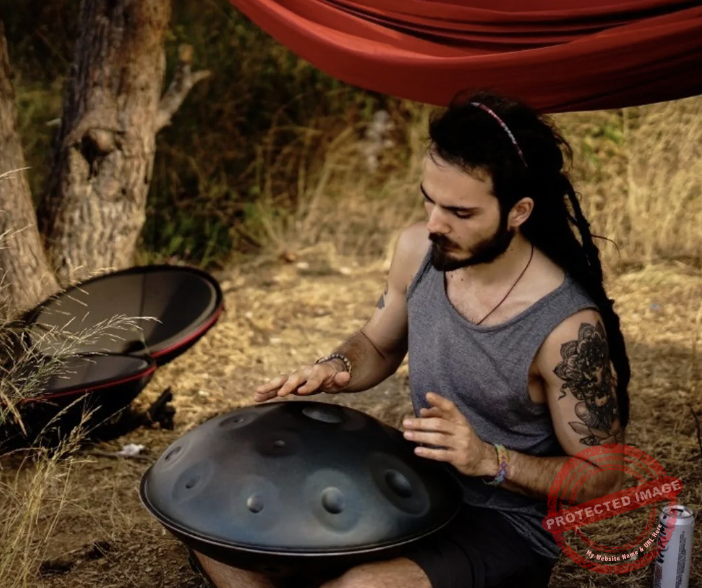
Berk Öztuna, a musician from Istanbul, is skilled in handpan, percussion, and guitar, performing and recording his own compositions globally. With expertise in music production and audio technology, he integrates virtual instruments and sound design tools seamlessly into his work. He also writes insightful articles on music production and gear for platforms like Plugin Noise and shares his music on Spotify and Instagram.
DONATE: Love our content? Help us keep Plugin Noise alive in the age of AI — Your donation fuels better content for music creators like you! You can donate here: pluginoise@gmail.com (Every amount counts.)

